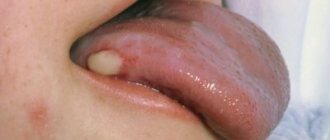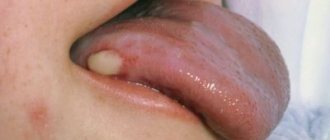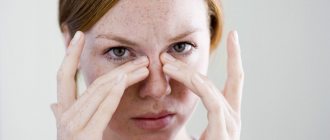The terms "dermatitis" and "eczema" are synonymous. The term eczema is usually applied to the dermatitis seen in atopic individuals. The term "dermatitis" means inflammation of the skin. It can be acute with weeping, formation of crusts and vesicles, subacute or chronic with dryness, peeling and cracks.
Skin rashes are almost always itchy and are usually complicated by secondary infection.
Dermatitis can be exogenous (eg, contact, irritant, infectious or photodermatitis) or endogenous (eg, atopic, seborrheic, discoid).
Most often, the diagnosis is made on the basis of a detailed history and morphological studies of skin rashes, taking into account the characteristics of their distribution.
Atopic dermatitis
Atopic dermatitis begins in childhood, between 2 and 6 months of age, and affects about 2% of the population, but is now experiencing an increase in prevalence. A family history of atopy is present in 70% of patients. Hay fever (hay fever) and/or asthma may develop as your child gets older. More than 90% of children recover by age 12, but it is very difficult to predict this in an individual child.
Atopic dermatitis in children affects the face, neck, and torso. Later, the flexor surfaces are involved in the process: popliteal, elbow, wrist and ankle joints, and as a result of repeated scratching, lichenification of the skin can occur. Hand dermatitis usually appears later in life. Secondary infection is common and often leads to worsening of the dermatitis. Pruritus can be debilitating and cause great distress for patients and families. Some patients, especially infants and young children, have food allergies, most often to eggs, fish and dairy products. With atopic dermatitis, many skin disorders can be identified. Immunological abnormalities include a tendency to increase immunoglobulin E, a predisposition to anaphylactic reactions, and a decrease in local cell-mediated immunity. This leads to increased sensitivity to viral infections.
Make an appointment now!
Leave your contact details or call and our manager will contact you to make an instant appointment
Types of dermatological diseases
In medicine, there are more than a dozen varieties of this disease; let’s look at the most common forms of its manifestation. These include: contact, dry, atopic (or allergic, toxicoderma, eczema, urticaria), seborrheic dermatitis and the price of their treatment depends on the type of lesion.
Dry dermatitis
Symptoms of dry dermatitis appear only in the cold season, due to prolonged exposure to cold or, conversely, too dry air indoors. There is a decrease in immunity and a deterioration in the general condition of the body. A distinctive feature is the duration of the course and the seasonal manifestation of exacerbations.
Contact dermatitis
Foci of simple contact dermatitis form at the site of exposure to the primary irritant. It is distinguished by the absence of manifestations of an acute reaction and the further spread of the inflammation process after the exclusion of the irritating element. For example, when they often wear clothes made from synthetic fabrics, to the fibers of which the body is highly sensitive.
Atopic dermatitis
By atopic dermatitis, clinic doctors mean a chronic, often hereditary allergic disease with recurrent periods and significant complications. In the first stages (in children from 3 months to 2 years, and at 4-7 years), the development of the disease manifests itself in the form of redness with copious discharge and the formation of small blisters. And in the last stages, severe dryness and pallor of the skin predominates.
Toxidermy
Toxicoderma is accompanied by significant damage to the skin from toxic substances. It differs in that the allergen enters the body through the blood, respiratory system and oral cavity. This is a very serious and dangerous disease and at the first manifestations (shortness of breath, swelling of the mucous membranes, stomach pain), you must urgently contact specialists who will professionally provide first aid. It is impossible to remove toxic substances from the body on your own.
Discoid dermatitis
Discoid dermatitis is characterized by the appearance of round or oval spots in symmetrical areas, often on the extensor surfaces, usually in adult patients. Exogenous causes must be excluded.
Dyshidrosis is a variant of eczema in which recurrent vesicles or bullae affect the palms, fingers, toes, or both. The disease is characterized by remissions and exacerbations, which are sometimes provoked by fever, emotional stress, and active fungal infection.
Causes of dermatitis on the chest
Rashes on the chest can be caused by various factors, which can be divided into internal and external.
Internal factors include:
- metabolic disorders, hypovitaminosis;
- hormonal imbalance during pregnancy and lactation;
- allergies to food, wool, pollen, medications, etc.;
- heredity.
External reasons may be:
- mechanical impact (friction) due to wearing tight or synthetic underwear;
- chemical exposure (use of certain cosmetics).
When rashes appear on the chest, you should identify and eliminate all kinds of irritating factors that led to dermatitis, and begin treatment as quickly as possible.
Irritative dermatitis
In irritative dermatitis, the rash may be caused by physical or chemical irritation and damage to the skin, in which case it is not usually associated with an allergy. This type of damage can be caused by soap, detergents, food products, and building materials.
The necessary examination and adequate modern treatment for each form of dermatitis can be determined by highly qualified specialists of our center - the Three I Immunology Clinic - allergists and dermatologist. Come visit us at Novosibirsk, st. Galushchaka, 2, we will help solve your problems!
Methods of infection
Sometimes we ourselves, without noticing it, put ourselves in danger, without thinking about what consequences allergic dermatitis can lead to when postponing a visit to the clinic. Ways of human contact with allergens that can cause disease:
- medicinal – manifests itself after the introduction of drugs into the body. For example, antibiotics, vitamins, analgesics, gamma globulins;
- food - allergens enter our body along with food;
- professional - observed in people who are constantly in contact with allergens, for example in production with a high concentration of cobalt, nickel, chromium;
- autointoxication – characterized by the accumulation of autoallergens, for example, in patients with pathologies of the gastrointestinal tract.
Eczema
Eczema is also a chronic disease and manifests itself in the form of acute inflammation of the skin and subcutaneous tissue under the influence of internal or external irritants. This allergy is manifested by areas of dry, flaky skin, cracks, redness, swelling and weeping lesions. In severe cases, even damage to the entire surface of the epithelium. Most often, workers in metallurgical plants, pharmaceutical and food industries suffer.
Seborrheic dermatitis
Seborrheic dermatitis is a disease caused by a certain fungus. Very often, the causes of its appearance are stress conditions, hormonal disorders and diseases of the nervous system.
Symptoms of dermatitis in a child
The appearance of diaper dermatitis is accompanied by redness and irritation of the skin in places where it comes into contact with wet diapers or dirty diapers. If you treat the skin and groin folds with a protective cream before putting on a diaper, you can reduce the risk of unpleasant symptoms.
Symptoms of atopic dermatitis can include severe dry skin, redness, swelling and a weeping rash. Often the lesions are symmetrical and localized on the skin of the face, the bends of the arms and legs, palms and soles. All this is accompanied by noticeable itching. Special creams - emollients - will help reduce itching and redness, but will not solve the problem comprehensively.
Seborrhea (“milk crusts”) is characterized by the appearance of gray-yellow scales on the head, which can spread lower - the forehead, eyebrows and ears, and sometimes hide in the folds of the baby’s body. There is practically no itching. Although seborrhea should only be treated by a doctor, using the right hygiene products can also help relieve symptoms.
Contact dermatitis occurs at the site of contact with an external irritant and appears as well-defined swelling and redness of the skin. Accompanied by itching, pain and burning. If the infection is severe, blisters and a weeping rash will form.
Red dermatitis, also known as lichen planus
This is a chronic itchy skin disease, which is accompanied by the appearance of pink-red-violet rashes, merging into large plaques, up to 10 cm in size, with the formation of garlands and rings.
Locations: the lateral part of the body, the inner surface of the arms in places of flexion, mucous membranes of the mouth and genitals.
There are several forms of damage to the skin and mucous membranes. Manifestations of the disease are very diverse: papules, spots, erosions, blisters, etc.
Risk group
The risk group includes:
- children whose both parents suffer from allergies;
- infectious diseases of the mother during pregnancy;
- living in heavily polluted areas.
There are several most common types of dermatitis.
Clinical researches
The beneficial effects of the products have been proven by clinical studies. The products are recommended by the Union of Pediatricians of Russia. During clinical studies, experts were able to record impressive results.
Cream "La-Cri" for dry skin:
- eliminates dryness and flaking;
- retains the skin's own moisture;
- protects skin from wind and cold.
Emulsion "La-Cri":
- moisturizes and nourishes the skin;
- relieves itching and irritation;
- soothes and restores the skin.
Cleansing gel “La-Cri”:
- gently cleanses the skin;
- relieves redness and itching;
- restores and nourishes the skin.
Sources:
- V.V. Chebotarev, N.V. Chebotareva, M.S. Askhakov, E.V. Bronnikova, Sensitive skin: causes, methods of therapy, journal Medical Bulletin of the North Caucasus, 2015 https://cyberleninka.ru/article/v/chuvstvitelnaya-kozha-prichiny-metody-terapii
- E.G. Sanakaeva, S.A. Masyukova, I.V. Ilyina, E.V. Vvedenskaya and others, Modern therapy of acne and acneform dermatoses, Russian Journal of Skin and Venereal Diseases, 2013 https://cyberleninka.ru/article/v/sovremennaya-terapiya-akne-i-akneformnyh-dermatozov
- Baumann Leslie, Cosmetic Dermatology. Principles and practice, publishing house: MEDpress-inform, 2016
- Ratner Desiri, Avram M.R., Avram M.M., Procedures in Dermatology. Clinical cosmetology, Publishing house: GEOTAR-Media, 2019
- Sukolin Gennady Ivanovich, Clinical dermatology. A short guide to the diagnosis and treatment of dermatoses, publishing house: Notabene, 2017
Photos of dermatitis
Photo album on the diseaseDiagnosis and treatment
The physical examination is complemented by skin testing using a patch test if the reaction occurs frequently or persists for a long time. Treatment may vary: either washing with copious amounts of water and avoiding further exposure to the irritant, or therapy with corticosteroids. Emollients are used to aid the healing process. In most cases, the skin becomes clear within 3 weeks. Soap should not come into contact with affected areas. Severe, persistent, or infected lesions may require the use of systemic corticosteroids, antibiotics, or calcineurin inhibitors.
Why does dermatitis occur in children?
Children's skin is fragile and especially sensitive to friction and the effects of household chemicals familiar to adults, and also quickly demonstrates a gastrointestinal reaction to food products that are not suitable for the child's age or individual characteristics.
Aggressive environmental influences or hereditary factors can cause allergic reactions in the baby and manifest themselves on the skin in the form of various rashes. But don't be scared and panic. Let's figure out what types of rashes there are and what is their difference?
Prevention of dermatitis in children
To prevent dermatitis, it is important to follow the rules of hygiene and nutrition for the child, to give preference to clothing made from natural fabrics, hypoallergenic household products and cosmetics. To build strong immunity, children benefit from air baths and hardening procedures. For proper skin care, it is recommended to use cosmetics created specifically for children - preferably without parabens, phthalates, with a hypoallergenic composition and labeled 0+ . Correctly selected products strengthen the baby’s skin barrier, care for the skin without interfering with its natural development.
_____________________________________________ 1 - Clinical study 1035F4 2 - Clinical study 1016F10.01.02 3 - Sunflower oil distillate and inflammation. June 2010. 4 — Clinical study of Cream for “milk crusts” 1042F3.01.24
Dermatosis: causes
The main factors that can trigger the development of this disease include heredity. A person is not protected from allergic reactions and skin pathologies caused by exposure to various irritants if several generations ago one of his relatives suffered from this disease. If the immune, nervous and endocrine systems function abnormally, this can create a favorable environment for changes in the skin of a pregnant woman.
Infections can influence the development of dermatosis. And here we mean not only viruses and bacteria, but also various fungi.
A special group is formed by irritants of an infectious nature:
- Chemical. This includes solvents, metals, preservatives and acids.
- Mechanical. They exert influence in the form of pressure, shock and friction.
- Biological. They manifest themselves through insect poison, pollen and fur.
- Physical. This group of stimuli is associated with temperature fluctuations.
If a person has low resistance to allergens, then certain of the above factors can easily provoke the development of such a disease.
Treatment of dermatitis on the chest
It is important to note that you cannot self-medicate based only on a photo of dermatitis on the chest in women or on the sternum in men and its symptoms. Many other diseases have similar symptoms. If redness and itching occur, consult your doctor to make an accurate diagnosis and prescribe appropriate treatment. In addition, you should not scratch or pick off the crust from the affected area of the skin, so as not to cause an infection.
Treatment of dermatitis on the chest involves a complex approach. First of all, depending on the cause of the disease, antiallergic, sedative or other drugs may be prescribed to relieve acute inflammation. In addition, it is recommended to follow a diet, wear only natural underwear and clothes that do not restrict movement, and use special products to heal and reduce itching.
One of the most popular drugs is the cream “Losterin”, which contains several active ingredients. In addition to the cream, the Losterin product range includes shampoo and gel - they can be used for any type of dermatitis. The composition contains deresined naphthalan and salicylic acid, which have a pronounced antifungal and anti-inflammatory effect, and natural oils provide exfoliating and bacteriostatic effects.









